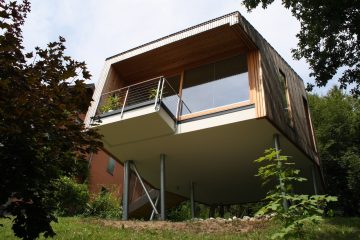Gardening is a rewarding hobby, but not everyone has the time or energy to maintain a traditional garden. The good news is that with thoughtful planning and design, you can create a beautiful, low-maintenance garden that requires minimal upkeep. Here are some expert tips to help you design a garden that you can enjoy without spending all your free time working on it.
1. Plan Your Garden Layout
Assess Your Space
Before you start planting, take some time to assess your garden space. Consider factors such as sunlight, soil type, and existing structures. Understanding these elements will help you choose the right plants and layout for a low-maintenance garden.
- Sunlight: Identify areas that receive full sun, partial shade, or full shade.
- Soil Type: Test your soil to determine its pH and nutrient levels.
- Drainage: Ensure your garden has proper drainage to prevent waterlogging.
Create a Simple Design
Keep your garden design simple and functional. Avoid intricate layouts that require constant attention.
- Straight Lines and Clear Paths: Simple geometric shapes and clear pathways make maintenance easier.
- Group Plants: Planting in clusters or groups reduces the need for individual care and watering.
2. Choose Low-Maintenance Plants
Native Plants
Native plants are adapted to your local climate and soil conditions, making them easier to care for and more resilient to pests and diseases.
- Benefits: Require less water, fertilizer, and pesticides.
- Examples: Research native plants that thrive in your region.
Perennials Over Annuals
Perennials come back year after year, reducing the need for replanting and constant care.
- Benefits: Long-lasting and often more resilient.
- Examples: Daylilies, hostas, and lavender are popular low-maintenance perennials.
Drought-Tolerant Plants
Choose plants that can thrive with minimal watering, especially if you live in a dry climate.
- Benefits: Less frequent watering and reduced water bills.
- Examples: Succulents, cacti, and ornamental grasses.
3. Efficient Watering Solutions
Drip Irrigation Systems
Drip irrigation delivers water directly to the roots, minimizing waste and ensuring efficient use of water.
- Benefits: Reduces evaporation and runoff, saving water.
- Installation: Set up a drip irrigation system with a timer to automate watering.
Rain Barrels
Collecting rainwater is an eco-friendly way to water your garden.
- Benefits: Reduces reliance on municipal water and lowers your water bill.
- Installation: Place rain barrels under downspouts to collect runoff from your roof.
Mulching
Mulch helps retain soil moisture, suppress weeds, and regulate soil temperature.
- Benefits: Reduces the need for frequent watering and weeding.
- Application: Apply a layer of organic mulch, such as wood chips or straw, around your plants.
4. Minimize Lawn Areas
Replace Lawn with Ground Cover
Lawns require regular mowing, watering, and fertilizing. Replace parts of your lawn with low-maintenance ground cover plants.
- Benefits: Reduces mowing and watering needs.
- Examples: Clover, creeping thyme, and moss are good alternatives.
Create Hardscape Features
Incorporate hardscape elements like patios, walkways, and rock gardens to reduce grassy areas.
- Benefits: Low maintenance and adds structure to your garden.
- Materials: Use materials like stone, gravel, or pavers.
Artificial Grass Installation
For a truly low-maintenance lawn, consider installing artificial grass. Artificial grass eliminates the need for mowing, watering, and fertilizing, providing a lush, green lawn year-round with minimal effort. Click here to learn about Turftopia’s professional artificial grass installation Los Angeles services.
- Benefits: No mowing, watering, or fertilizing. Ideal for areas with water restrictions.
- Installation: Professional installation ensures a natural look and feel.
5. Use Weed Control Strategies
Landscape Fabric
Landscape fabric blocks weeds while allowing water and nutrients to reach your plants.
- Benefits: Reduces the need for weeding.
- Installation: Lay landscape fabric before planting and cover with mulch.
Pre-Emergent Herbicides
Use pre-emergent herbicides to prevent weed seeds from germinating.
- Benefits: Prevents weeds without harming established plants.
- Application: Apply in early spring before weed seeds begin to sprout.
Dense Planting
Plant densely to create a canopy that shades the soil and suppresses weeds.
- Benefits: Less space for weeds to grow.
- Strategy: Use ground covers and plant in clusters.
6. Simplify Maintenance Tasks
Prune Strategically
Choose plants that require minimal pruning and trim them during the dormant season to promote healthy growth.
- Benefits: Reduces the frequency of pruning.
- Tools: Use quality pruners and loppers to make clean cuts.
Automate Garden Care
Consider automating certain garden tasks, such as watering and lighting.
- Benefits: Saves time and ensures consistent care.
- Options: Use timers for irrigation systems and solar-powered garden lights.
7. Sustainable Practices
Composting
Composting kitchen and garden waste can create nutrient-rich soil, reducing the need for synthetic fertilizers.
- Benefits: Improves soil health and reduces waste.
- Method: Set up a compost bin and regularly add organic materials.
Integrated Pest Management (IPM)
Use IPM to manage pests in an environmentally friendly way.
- Benefits: Reduces reliance on chemical pesticides.
- Techniques: Encourage beneficial insects, use natural predators, and apply organic pesticides only when necessary.
Conclusion
Creating a low-maintenance garden doesn’t mean sacrificing beauty or functionality. By planning thoughtfully, choosing the right plants, and implementing efficient watering and maintenance strategies, you can enjoy a lush, vibrant garden with minimal effort. Embrace these tips to design a sustainable and easy-to-care-for garden that provides year-round enjoyment with less work.




